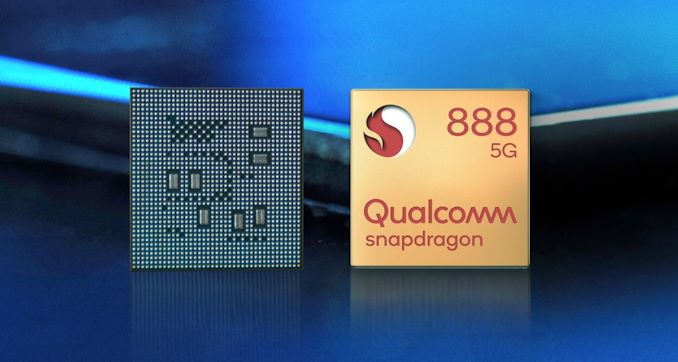The Qualcomm MSM8909, also known as the Qualcomm Snapdragon 210, is an entry-level System on Chip (SoC) designed primarily for low-cost smartphones, basic tablets, and IoT devices. It features a quad-core ARM Cortex-A7 processor, an Adreno 304 GPU, and support for 4G LTE, Wi-Fi, Bluetooth, and other essential connectivity features. This chip is typically used in affordable devices where cost efficiency and power consumption are key priorities.
If you're looking for equivalent ICs or SoCs to the Qualcomm MSM8909 (Snapdragon 210), you'll want other entry-level SoCs with quad-core CPUs, integrated LTE and Wi-Fi/Bluetooth capabilities, and support for basic multimedia and processing. Here are some alternatives from various manufacturers:
1. MediaTek
MediaTek MT6737: A quad-core Cortex-A53 based SoC designed for low-cost smartphones. It offers LTE support, Wi-Fi, and Bluetooth, and provides similar performance to the Snapdragon 210. It is commonly used in affordable devices.
MediaTek MT6580: This is a quad-core Cortex-A7 processor, much like the Snapdragon 210, and is targeted at entry-level smartphones and tablets. It includes 3G connectivity, Wi-Fi, and Bluetooth but lacks LTE support.
MediaTek MT6750: A slightly more powerful SoC with Cortex-A53 cores, it provides 4G LTE and multimedia features. It is used in budget devices but offers improved processing power compared to the MSM8909.
2. Unisoc (formerly Spreadtrum)
Unisoc SC9832E: A quad-core Cortex-A53 SoC designed for budget smartphones. It features LTE connectivity, Wi-Fi, and Bluetooth, similar to the MSM8909 but with lower overall performance. It's often used in very low-cost smartphones.
Unisoc SC9863A: This SoC supports octa-core Cortex-A55 (four performance cores and four efficiency cores), LTE, Wi-Fi, and Bluetooth. It provides better power efficiency and performance compared to the MSM8909 and can be used in entry-level to mid-range smartphones.
3. Samsung Exynos
Exynos 7570: A quad-core Cortex-A53 processor built for entry-level smartphones. It features LTE support, Wi-Fi, and Bluetooth, along with basic multimedia capabilities. This SoC is aimed at low-cost Mobile Devices and is comparable to the Snapdragon 210.
Exynos 7884: A more powerful option from Samsung, providing Cortex-A53 cores and LTE support. While it is a step up in terms of performance, it is still designed for budget smartphones and lower-end devices.
4. Qualcomm (Internal Qualcomm Alternatives)
Qualcomm Snapdragon 410 (MSM8916): The Snapdragon 410 is an upgraded version of the Snapdragon 210, with a quad-core Cortex-A53 CPU, Adreno 306 GPU, and support for 4G LTE. It provides better performance than the MSM8909 and is often found in affordable smartphones.
Qualcomm Snapdragon 212 (MSM8909v2): An improved version of the Snapdragon 210, with enhanced performance and LTE support. It is commonly used in entry-level devices and offers improvements over the MSM8909 in terms of processing speed and connectivity features.
5. Intel (Atom Chips for Low-Cost Devices)
Intel Atom x3-C3130: A quad-core SoC designed for entry-level tablets and smartphones. It is equipped with a Cortex-A7 CPU and supports 3G/4G LTE, Wi-Fi, and Bluetooth. While it is not as widely adopted in smartphones as Qualcomm or MediaTek chips, Intel’s Atom chips are a low-cost alternative for basic devices.
6. Nuvoton
Nuvoton NUC980: A series of ARM Cortex-M0/M3/M4 based microcontrollers, Nuvoton offers a range of low-power solutions for IoT and entry-level systems, though not typically for smartphones. These are useful for very cost-sensitive applications that don’t require advanced mobile processing power but still need basic connectivity features.
7. Rockchip
Rockchip RK2928: A low-cost SoC featuring a Cortex-A9 core with basic 3G connectivity and Wi-Fi/Bluetooth support. It is suitable for tablets and low-end smartphones. While it is older technology, it's still used in some budget devices.
Key Specifications to Compare:
CPU: The Snapdragon 210 uses Cortex-A7 cores, which are low-power and suited for basic tasks. You should look for SoCs with Cortex-A7, Cortex-A53, or Cortex-A55 cores, which will provide similar or better performance for entry-level devices.
GPU: The Adreno 304 GPU in the Snapdragon 210 is relatively basic. Equivalent SoCs will have GPUs like Mali-T720, Mali-T860, Adreno 306, or similar low-power GPUs, which are common in budget smartphones.
Connectivity: Ensure that the SoC includes 4G LTE (or at least 3G), Wi-Fi, and Bluetooth, as these are the essential connectivity features for modern smartphones.
Camera Support: SoCs like the Snapdragon 210 are typically paired with basic camera ISPs. Look for comparable SoCs with basic camera capabilities for 8 MP or lower-resolution cameras.
Multimedia: Check support for HD video playback (e.g., 720p or 1080p) and audio features to ensure a similar multimedia experience.
Power Efficiency: For entry-level devices, battery life is critical. SoCs built on older Cortex-A7 or Cortex-A53 architectures are typically more power-efficient than newer, high-performance chips.
Conclusion:
The Qualcomm MSM8909 (Snapdragon 210) is an entry-level SoC, and its direct equivalents are MediaTek's MT6737, Unisoc's SC9832E, Samsung's Exynos 7570, Intel's Atom x3-C3130, and Qualcomm's own Snapdragon 410 or Snapdragon 212. These alternatives provide similar features, including 4G LTE, Wi-Fi, Bluetooth, and basic multimedia support, making them suitable for low-cost smartphones, tablets, and IoT devices.
Other

What is HBM (High Bandwidth Memory)?
2024.09.05

What is Antenna Tuner IC?
2024.09.20

What’s the Difference between LPDDR and DDR?
2024.09.25

Snapdragon 888 5G Mobile Platform
2024.09.26

What is WiFi 6E?
2024.09.26

What is Bluetooth Audio SoC?
2024.09.26

What's HBM3E (High Bandwidth Memory 3)?
2024.09.26

What is an Audio Codec?
2024.10.09





